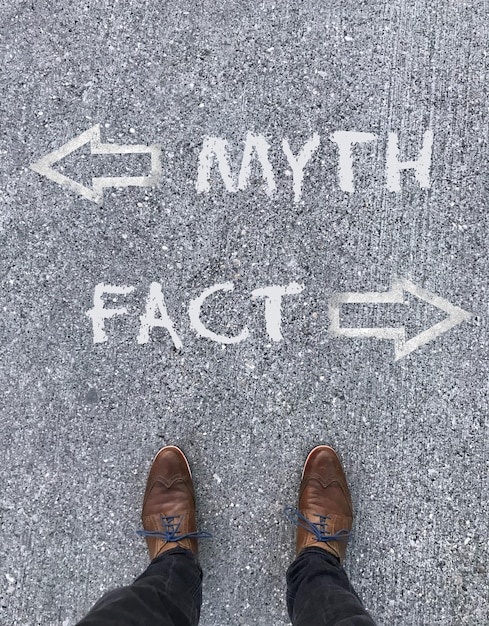Gen Z’s Misinformation Fight: Can New Media Literacy Cut Exposure by 25%?

The ambitious goal of reducing Gen Z’s fake news exposure by 25% in six months hinges on the effective implementation and widespread adoption of innovative media literacy initiatives that equip young people with critical evaluation skills.
The digital age, while connecting us globally, has also ushered in an unprecedented era of information overload, making the discernment of truth from falsehoods an increasingly complex challenge. For Gen Z’s Fight Against Misinformation: Can New Media Literacy Initiatives Reduce Fake News Exposure by 25% in the Next 6 Months? is not merely a theoretical question, but a pressing societal imperative.
The Digital Landscape: A Breeding Ground for Misinformation
The internet, once heralded as an egalitarian fount of knowledge, has evolved into a vast and often chaotic ecosystem where truth and deception coexist. For Gen Z, digital natives who have grown up with smartphones and social media as extensions of their hands, this landscape is their primary arena for information consumption. However, this innate familiarity does not automatically translate into media literacy. In fact, their constant immersion might paradoxically make them more susceptible to the subtle, and not so subtle, tactics of misinformation.
Misinformation, including its more insidious sibling, disinformation, spreads with alarming speed, often outcompeting factual content due to its sensational nature and emotional appeal. This phenomenon is exacerbated by algorithmic amplification, which prioritizes engagement over accuracy, creating echo chambers where false narratives thrive. The sheer volume of content makes individual verification a daunting task, even for those actively seeking truth.
The Pervasiveness of Falsehoods
Understanding the problem requires acknowledging the scale of misinformation. From political narratives to health hoaxes and conspiracy theories, false content permeates various online platforms. Social media, in particular, acts as a super-spreader, leveraging personal networks and rapid sharing mechanisms. This environment demands that we move beyond passive consumption and adopt a proactive, critical approach to information.
- Algorithmic Echo Chambers: Platforms often show users content similar to what they’ve previously interacted with, reinforcing existing beliefs and limiting exposure to diverse perspectives.
- Emotional Contagion: Sensational or emotionally charged misinformation tends to spread faster, as it taps into human biases and immediate reactions.
- Source Ambiguity: Distinguishing credible sources from propaganda or manipulated content can be challenging, especially when presented in visually appealing and seemingly legitimate formats.
- Deepfakes and AI-Generated Content: The rise of sophisticated AI tools can create highly convincing but entirely fabricated images, audio, and video, making visual evidence unreliable without proper scrutiny.
The digital landscape is a challenging battleground, and equipping Gen Z with the right tools is paramount. Their future, and indeed the future of democratic discourse, depends on their ability to navigate this complex informational world.
Gen Z’s Unique Vulnerabilities and Strengths
Gen Z, broadly defined as those born between the mid-1990s and early 2010s, exhibits a fascinating paradox when it comes to misinformation. On one hand, their digital fluency suggests a natural ability to navigate online spaces. On the other hand, this same fluency can foster overconfidence, making them less likely to question what they encounter online. They are a generation that values authenticity and social justice, yet they are also highly susceptible to viral trends and emotionally charged content.
Their strengths lie in their innovative thinking, their comfort with technology, and their strong sense of community, often cultivated through online interactions. These traits can be leveraged in the fight against misinformation, transforming them from passive consumers into active critical thinkers and digital citizens. However, their reliance on social media for news and information means they are constantly exposed to a deluge of content, often without the necessary filters or critical frameworks.
Bridging the Gap: From Digital Natives to Media Literates
Being a digital native does not inherently mean being media literate. Many Gen Z individuals may possess technical prowess but lack the critical thinking skills to evaluate information rigorously. This gap highlights the urgent need for targeted interventions that move beyond simply teaching “how to use” technology to “how to critically engage with” it. They are adept at sharing, but perhaps less skilled at verifying before sharing, a crucial step in stemming the tide of misinformation.
- Over-reliance on Social Media: Many Gen Z individuals primarily get their news from social media feeds, which are often uncurated and prone to misinformation.
- Speed vs. Accuracy: The fast-paced nature of online interactions often prioritizes speed of sharing over accuracy of information.
- Visual Literacy Gaps: While highly visual, some may lack the skills to deconstruct manipulated images or videos effectively.
- Peer Influence: Information shared by peers, even if inaccurate, can carry a higher degree of perceived credibility.
Despite these vulnerabilities, Gen Z also possesses a strong desire to make a difference and a capacity for rapid learning. By harnessing these strengths, media literacy initiatives can empower them to become effective agents of change in the digital information ecosystem.
The Promise of New Media Literacy Initiatives
The rise of misinformation has spurred a critical need for robust media literacy education. Traditional approaches, often classroom-bound and didactic, are being reimagined to meet the dynamic challenges of the digital age. New media literacy initiatives are characterized by their interactive, practical, and often peer-led nature, aiming to equip Gen Z with actionable skills rather than just theoretical knowledge.
These initiatives frequently incorporate elements of digital citizenship, ethical online behavior, and critical evaluation techniques. They move beyond simply identifying obvious fake news to understanding the psychological underpinnings of misinformation, the role of algorithms, and the importance of diverse perspectives. The goal is to foster a generation of proactive information consumers who can discern, verify, and responsibly share content.
Innovative Approaches to Education
Effective media literacy programs are not one-size-fits-all. They often integrate various pedagogical approaches, leveraging technology itself to teach critical thinking. This includes gamified learning, interactive simulations, and real-world case studies that challenge students to apply their skills in practical scenarios. The emphasis is on active engagement and critical inquiry, moving away from rote memorization towards genuine understanding and application.
- “Pre-bunking” Strategies: Teaching Gen Z to recognize misinformation tactics before they encounter them, building resilience by exposing them to common manipulation techniques.
- Fact-Checking Tools and Skills: Providing practical training on using reliable fact-checking websites, reverse image searches, and cross-referencing information.
- Source Analysis Training: Educating on how to evaluate the credibility, bias, and purpose of various information sources.
- Digital Footprint Awareness: Understanding how their own online behavior and information sharing can contribute to the spread or containment of misinformation.
The promise of these initiatives lies in their potential to create a ripple effect, empowering Gen Z to not only protect themselves but also to educate their peers and families, fostering a more informed society as a whole.
Measuring Success: Defining a 25% Reduction
Setting an ambitious goal like a 25% reduction in fake news exposure within six months is only meaningful if we can clearly define and measure success. This isn’t as straightforward as it might seem. “Exposure” itself can be tricky to quantify, ranging from passive viewing to active engagement and sharing. Therefore, a multifaceted approach to measurement is essential, combining quantitative data with qualitative insights.
Key metrics could include self-reported exposure, behavioral changes (e.g., reduced sharing of unverified content), increased use of fact-checking tools, and improved scores on media literacy assessments. Surveys, digital tracking, and observational studies could all play a role. Furthermore, understanding the nuances of how Gen Z interacts with information online is crucial to developing effective measurement frameworks that truly reflect changes in their exposure and susceptibility to misinformation.
Challenges in Quantification
The dynamic nature of online content and user behavior presents significant challenges to precise quantification. How do we distinguish between incidental exposure and active belief? How do we account for the varying levels of content consumption across different platforms? These questions underscore the complexity of defining and tracking a 25% reduction authentically and reliably. It calls for a blend of direct and indirect measurement strategies.

- Baseline Data Establishment: Accurately determining current exposure rates before intervention is critical for measuring any reduction.
- Self-Reporting Bias: Participants might overestimate their critical thinking skills or underestimate their exposure to avoid social desirability bias.
- Platform Data Accessibility: Obtaining granular data on exposure and engagement from social media platforms can be difficult due to privacy concerns and proprietary data.
- Long-Term vs. Short-Term Impact: A 25% reduction in six months is a short-term goal; assessing sustained changes requires longitudinal studies.
While challenging, robust measurement is vital for demonstrating the efficacy of media literacy initiatives and justifying continued investment. It’s about more than just numbers; it’s about understanding the real-world impact on individuals and society.
Implementation Strategies: Reaching and Engaging Gen Z
Achieving a 25% reduction in fake news exposure within six months requires not just well-designed initiatives but also effective implementation strategies that resonate with Gen Z. This means going where they are: online, on social media, and in their communities. Traditional top-down educational models may be less effective than peer-to-peer learning, mentorship, and creative, interactive content.
Partnerships are also key, involving schools, community organizations, technology platforms, and even influencers. Content needs to be highly engaging, leveraging formats that Gen Z prefers, such as short videos, interactive quizzes, and challenges. The language should be authentic and relatable, avoiding condescension or overly academic tones. The goal is to make media literacy feel relevant, empowering, and even fun, not just another chore.
Building Sustainable Programs
For initiatives to have a lasting impact beyond the initial six-month target, they must be sustainable. This includes developing reusable resources, training educators and peer leaders, and integrating media literacy into existing curricula and community programs. Sustainability also implies adaptability, allowing programs to evolve as misinformation tactics themselves become more sophisticated.
- Influencer Collaboration: Partnering with trusted Gen Z influencers to disseminate media literacy tips and content through their platforms.
- Gamified Learning: Developing interactive games and challenges that teach critical thinking skills in an engaging and competitive format.
- Curriculum Integration: Incorporating media literacy lessons into existing school subjects like history, civics, and English.
- Community Workshops: Hosting accessible, interactive workshops in community centers, youth clubs, and libraries.
Ultimately, successful implementation hinges on making media literacy a continuous journey, not a one-time lesson, embedded within the everyday lives and digital interactions of Gen Z.
Challenges and Potential Roadblocks
While the ambition to reduce misinformation exposure is laudable, the path is fraught with challenges. The very nature of the internet, with its decentralization and rapid information flow, makes it difficult to control. Adversaries—whether state-sponsored actors, malicious individuals, or opportunistic clickbait farms—are constantly evolving their tactics, creating a perpetual arms race. Resources for media literacy education are often limited, and scaling initiatives to reach a vast and diverse Gen Z population across different regions presents a significant hurdle.
Furthermore, inherent human biases and cognitive shortcuts can make individuals resistant to information that challenges their existing beliefs, regardless of how well-equipped they are with critical thinking skills. This psychological aspect means that education alone may not fully counteract the allure of false narratives that tap into fear, anger, or strong group identities. The digital divide, though narrowing, also means that access to quality educational resources and reliable internet connectivity is not universal.
Navigating the Complexities
Overcoming these challenges requires a multifaceted and adaptable strategy. It means continuous research into how misinformation spreads and how Gen Z engages with it. It also necessitates collaboration between educators, tech companies, policymakers, and civil society organizations to create a more resilient information ecosystem. Without addressing these systemic issues, individual media literacy efforts, while valuable, may struggle to meet an ambitious target like a 25% reduction in such a short timeframe.

- Rapid Evolution of Misinformation: New forms and channels of misinformation constantly emerge, requiring rapid adaptation of educational content.
- Political Polarization: Deep-seated ideological divides can make individuals resistant to accepting facts that contradict their political identities.
- Funding and Scale: Securing adequate funding and scaling initiatives to reach millions of Gen Z individuals simultaneously is a massive undertaking.
- Measuring Attribution: It can be challenging to definitively attribute a reduction in exposure solely to specific media literacy initiatives amidst other influencing factors.
Recognizing and proactively addressing these roadblocks will be crucial for any initiative aiming to significantly curb misinformation exposure among Gen Z.
The Path Forward: Sustained Engagement and Collective Responsibility
Achieving a 25% reduction in fake news exposure among Gen Z in the next six months, while ambitious, could be a significant step if new media literacy initiatives are strategically deployed and widely adopted. However, this is not a one-off project but an ongoing societal effort. The fight against misinformation is a marathon, not a sprint, requiring sustained engagement and a collective commitment from all stakeholders: educators, parents, tech companies, policymakers, and Gen Z themselves.
Future efforts must prioritize embedding media literacy deeply within educational systems, fostering a culture of critical inquiry from an early age. They also need to push for greater transparency from social media platforms regarding algorithms and content moderation. Most importantly, empowering Gen Z to be not just consumers but active, responsible participants in the digital sphere is key. Their voices and innovative approaches will be invaluable in shaping a more informed and resilient future.
Building a More Resilient Information Ecosystem
True success extends beyond a numerical reduction in exposure; it involves building a more robust and resilient information ecosystem. This means fostering critical thinking, promoting diverse perspectives, and encouraging healthy skepticism. It also requires the development of tools and practices that help individuals identify, understand, and mitigate the spread of misinformation. The journey is complex, but the potential rewards—a more informed, discerning, and democratic society—are immeasurable.
- Continuous Learning: Media literacy education must be an ongoing process, adapting to new technologies and misinformation tactics.
- Platform Accountability: Tech companies must take greater responsibility for the content amplified on their platforms and collaborate on solutions.
- Cross-Generational Dialogue: Encouraging open conversations about online information within families and communities to bridge knowledge gaps.
- Support for Independent Journalism: Recognizing and supporting credible news organizations as essential pillars against misinformation.
The 25% target thus represents not just a quantitative goal, but a call to action for a fundamental shift in how we approach information in the digital age, with Gen Z at the forefront of this critical transformation.
| Key Point | Brief Description |
|---|---|
| 💡 Digital Native Vulnerabilities | Despite tech fluency, Gen Z can be susceptible to misinformation due to social media reliance and lack of critical evaluation skills. |
| 📈 Media Literacy Promise | New initiatives focus on interactive, practical skills, and “pre-bunking” strategies to build resilience against fake news. |
| 📊 Measurement Challenges | Quantifying a 25% reduction in fake news exposure is complex, requiring robust, multi-faceted data collection methods. |
| 🚧 Roadblocks Ahead | Challenges include evolving tactics, limited resources, and human cognitive biases, demanding continuous adaptation and collaboration. |
Frequently Asked Questions about Misinformation and Gen Z
While digitally fluent, Gen Z relies heavily on social media for news, making them susceptible to algorithms and viral content that prioritize engagement over accuracy. Their digital native status doesn’t automatically confer media literacy, leading to vulnerabilities that misinformation producers often exploit through emotional or sensational narratives.
New media literacy initiatives are interactive, practical, and often peer-led, moving beyond didactic classroom settings. They incorporate “pre-bunking” strategies to identify misinformation tactics, teach fact-checking skills, and focus on practical application. This differs from older approaches that were often theoretical and less attuned to the rapid evolution of digital disinformation tactics.
Measuring a 25% reduction is complex. It involves combining quantitative data like self-reported exposure, reduced sharing of unverified content, and increased use of fact-checking tools, with qualitative insights. Baselines must be established, and methods need to account for biases, platform data accessibility limitations, and the dynamic nature of online content consumption.
Significant challenges include the constantly evolving tactics of misinformation, limited funding for scaling initiatives, and inherent human cognitive biases that make people resistant to information contradicting their beliefs. Additionally, the sheer volume of online content and the difficulty in attributing specific changes to particular initiatives present hurdles.
Achieving a 25% reduction in six months is ambitious but possible with strategic, widespread implementation of new initiatives. If met, it would signify a significant step. The next phase involves sustained engagement, integrating media literacy into core curricula, fostering platform accountability, and promoting continuous learning to build long-term resilience against evolving forms of misinformation.
Conclusion
The quest to significantly reduce Gen Z’s exposure to fake news through innovative media literacy initiatives is both an urgent and monumental endeavor. While the ambitious target of a 25% reduction within six months presents considerable measurement and implementation challenges, the potential societal benefits are profoundly compelling. Ultimately, success hinges not just on sophisticated educational programs, but on a collective shift towards greater digital responsibility, empowering Gen Z to be critical, discerning, and active participants in shaping a more truthful and resilient information landscape for the future.





